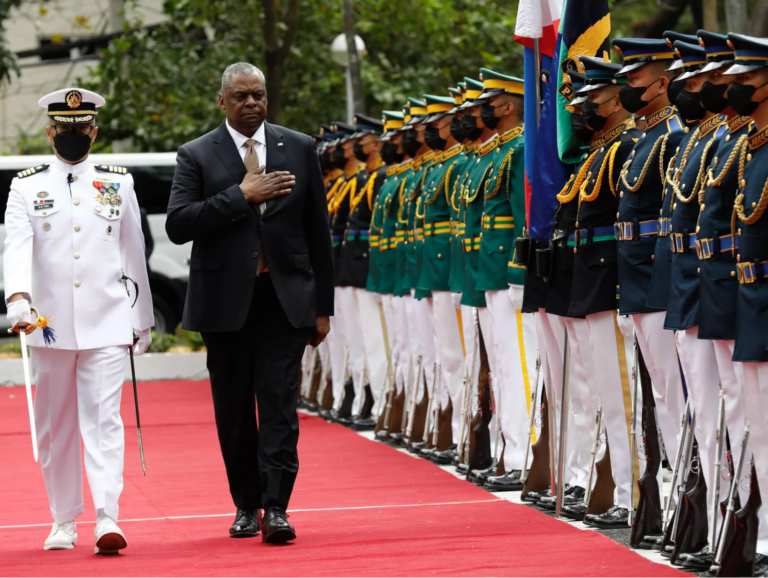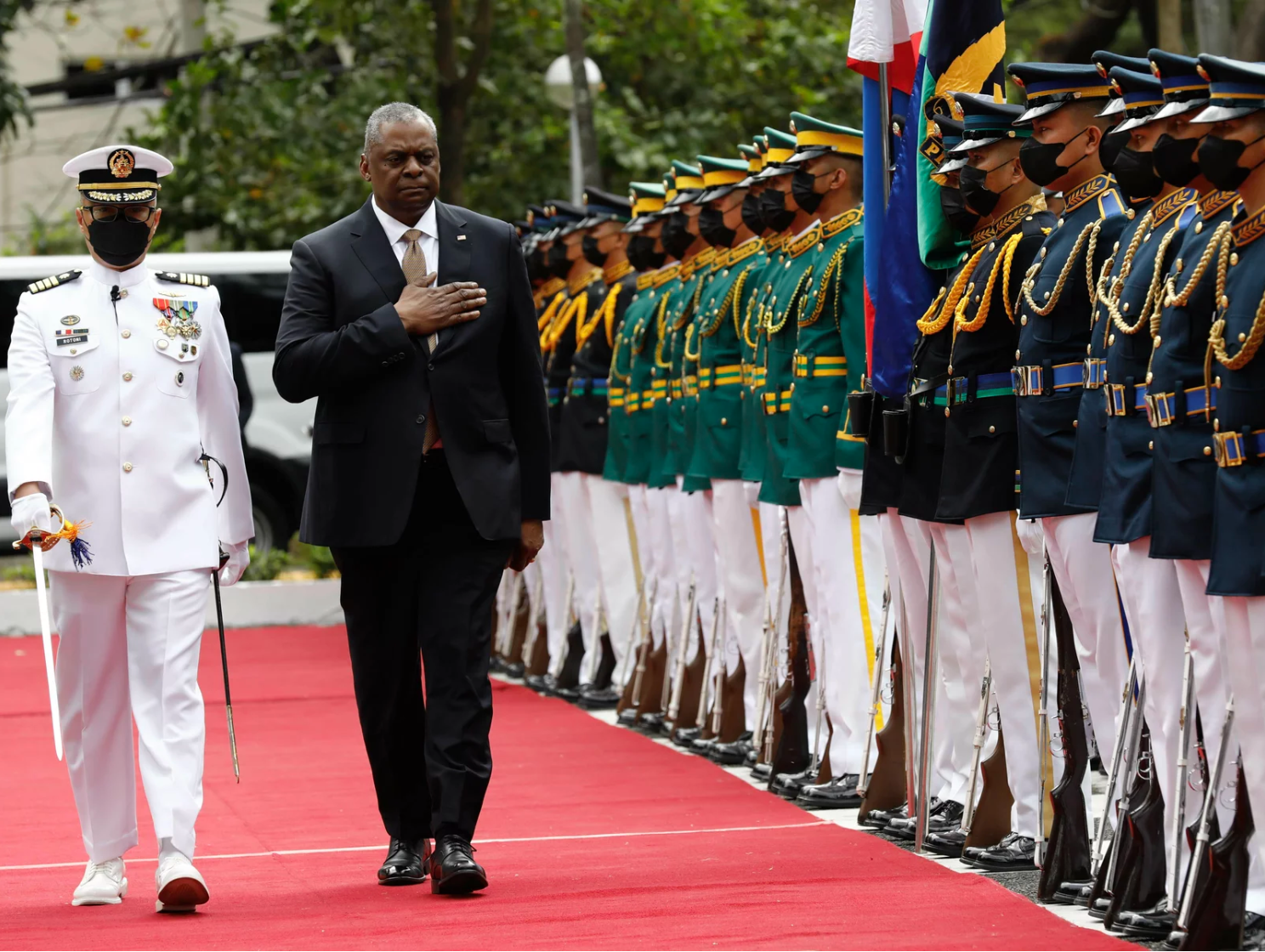

United States Defense Secretary Lloyd Austin walks past military guards during arrival honors at the Department of National Defense in Camp Aguinaldo military camp on Feb. 2, 2023 in Quezon City, Manila, Philippines.
Pool/Getty Images
MANILA, Philippines — The U.S. will expand its presence in Southeast Asia with access to more bases in the Philippines, the two countries announced Thursday.
“American commitment to the defense of the Philippines is ironclad. Our alliance makes both of our democracies more secure and helps uphold a free and open Indo-Pacific,” U.S. Secretary of Defense Lloyd Austin said during a press conference on Thursday afternoon in Manila.
The Department of Defense first announced the move, which is widely seen as a way to deter China’s influence in the region, late Wednesday amid Austin’s visit to the Philippines.
Austin landed in the capital Manila Tuesday night and met with Philippine President Ferdinand “Bongbong” Marcos and other high-ranking officials ahead of the announcement.
Analysts say the expansion is a resumption of the Enhanced Defense Cooperation Agreement, which aims to support combined training and exercises. The pact was initially signed in 2014 but progress has stalled over the years because of former President Rodrigo Duterte’s decision to turn away from the U.S. in favor of Beijing.
When the current Marcos government came into power last year — Bongbong is the son of the late president and dictator Ferdinand Marcos, Sr. — he promised to revive relations with the United States.
Maritime Affairs expert Jay Batongbacal at the University of the Philippines College of Law said this latest announcement does not necessarily mean more U.S. troops on the ground, but instead “provides mainly for the United States to be able to build infrastructure on Philippines military bases and for the pre-positioning of military supplies and equipment.”
According to the Defense Department’s statement, the U.S. military will utilize four new military bases in the Philippines — bringing the total number of bases in use to nine.
While both U.S. and Philippine officials have taken great pains to not specifically name China, analysts say this bigger footprint could help deter China both from taking action on self-governed Taiwan, as well as contain Beijing’s presence in the South China Sea.
Over the years China has grown increasingly aggressive toward its neighbors in the South China Sea by making what other countries say are excessive claims to territory in the crucial waterway and building military installments across the region — among other actions. Philippine officials say allowing the U.S military to use their bases will help better secure Manila’s interests in the South China Sea.
But not all Filipinos are on board with this plan.

Activists stage a protest outside the gates of Camp Aguinaldo main military camp on Feb. 2, 2023 in Manila.
Jes Aznar/Getty Images
Many Filipinos have expressed weariness about letting more U.S. servicemen be stationed in the Philippines again. The last U.S. military bases were dismantled in 1992, when a debate over their presence and Philippine sovereignty came to an impasse.
Liza Maza, the general secretary of the International League of Peoples’ Struggle, a Philippines-based organization that seeks to coordinate anti-imperialist movements, said her group is opposed to more U.S. military presence in the Philippines because of “past and continuing about violence against women and the LGBT community in relation to the presence of U.S. troops.”
“There have been murders and violations of women’s rights and … and justice wasn’t met,” she said.
One of the most prominent cases of this is that of Jennifer Laude, a trans woman who was murdered by a U.S. marine in 2014. Lance Cpl. Joseph Scott Pemberton was initially convicted in the Philippines, but was pardoned by former President Duterte and allowed to travel back home to the United States.
“Originally published on National Public Radio, Feb. 2, 2023”